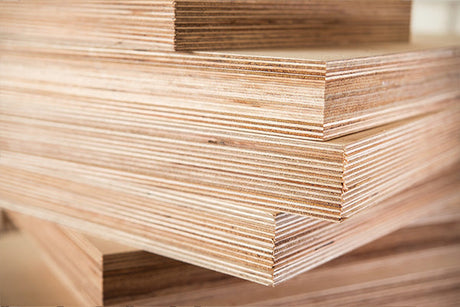Selecting appropriate skirting dimensions significantly influences both practical functionality and aesthetic proportion within different property styles. Understanding the relationship between building period, room size, ceiling height, and skirting proportions helps ensure selections enhancing architectural character while maintaining practical performance appropriate for specific applications.
The historical context provides important reference for period-appropriate selections beyond personal preference alone. Victorian properties (1837-1901) typically featured substantial skirting heights ranging from 150-220mm, with grander properties often incorporating elaborate profiles and heights reaching 250mm or greater. Edwardian buildings (1901-1910) generally continued these proportions while sometimes introducing slightly simplified profiles compared to high Victorian styles. 1930s semi-detached properties typically reduced heights to 120-170mm reflecting changing architectural fashions while maintaining substantial proportions compared to contemporary minimalist approaches. This historical understanding helps select dimensions maintaining architectural authenticity for period renovations, creating appropriate visual balance within specific architectural contexts rather than applying contemporary preferences potentially creating incongruous appearances despite quality materials and installation if dimensional selections fundamentally conflict with original architectural intentions despite perfect technical execution.
Contemporary properties offer greater dimensional flexibility without strict historical precedent, though general proportional principles remain relevant for aesthetic balance. Modern residential construction typically employs skirting heights between 95-145mm, providing practical protection without the substantial proportions associated with period properties. Minimalist architectural styles might reduce heights further to 70-95mm creating sleek appearances or occasionally eliminate skirting entirely in ultra-contemporary designs, though such minimal approaches often create practical maintenance challenges despite clean aesthetic appearances potentially undermined by inevitable wall damage without protective skirting regardless of careful occupancy without intentional damage but inevitable minor impacts during normal occupation potentially creating disproportionate remediation requirements compared to simple skirting replacement if damaged despite similar initial damage events.
Ceiling height creates fundamental context for appropriate proportional selection beyond specific period references. Traditional guidance suggests skirting height should represent approximately 7-8% of room height for balanced proportion, creating visual harmony without excessive dominance or insufficient presence regardless of absolute dimensions. For standard contemporary rooms with 2.4m ceilings, this translates to approximately 170-190mm skirting, while period properties with 3m+ ceilings might appropriately feature 210-240mm heights maintaining equivalent proportional relationships despite different absolute dimensions. This proportional approach explains why simply transferring dimensions between different property types frequently creates unsatisfactory results despite quality materials and installation, as proportional relationships rather than absolute measurements determine appropriate aesthetic balance within specific architectural contexts potentially creating discord despite technical execution if fundamental proportional relationships remain inappropriate for specific spatial characteristics.
Room size influences appropriate thickness selection alongside height considerations for comprehensive dimensional balance. Larger rooms with substantial proportions comfortably accommodate thicker skirting (18-25mm) providing visual substance appropriate for grander spaces, while smaller contemporary rooms better suit slimmer profiles (12-15mm) preventing overwhelming appearance within limited dimensions. This relationship explains why period properties typically featured thicker skirting beyond purely technical considerations, as the more substantial room proportions created appropriate context for more substantial trims maintaining balanced visual relationships between architectural elements rather than simply reflecting available materials or technical requirements potentially satisfied through less substantial profiles despite traditional selection of more significant dimensions for aesthetic rather than purely functional considerations.
Practical considerations alongside aesthetic proportions influence appropriate selections for specific applications beyond visual preferences alone. Areas with potential moisture exposure benefit from slightly taller skirting (minimum 125mm) providing enhanced splash protection particularly valuable in kitchens, bathrooms, or utility areas potentially experiencing occasional water spillage. High-traffic zones benefit from more substantial thickness (18mm+) offering enhanced impact resistance protecting both the skirting itself and underlying wall structures from damage during normal household activities. These practical factors explain why uniform skirting dimensions throughout properties sometimes create suboptimal results despite consistent appearance, as different functional requirements might justify varying specifications despite potential visual preference for absolute consistency potentially compromising practical performance in specific areas with particular functional requirements beyond general circulation spaces without equivalent practical challenges despite similar aesthetic contexts.
The relationship with other architectural elements creates important context for appropriate dimensional selection. Door architraves, picture rails, dado rails, and other trims should maintain consistent proportional relationships creating harmonic visual connections rather than conflicting dimensional approaches potentially creating discordant appearances despite quality materials and installation. Traditional approaches typically matched architrave thickness with skirting thickness while employing architrave widths approximately 75-80% of skirting height, creating visual relationship without identical dimensions potentially creating monotonous appearance without subtle proportional variation. This relational approach explains why comprehensive architectural trim schedules typically deliver more satisfactory results than isolated selections regardless of individual component quality, as the relationship between elements frequently determines overall impression beyond specific component characteristics potentially creating excellent individual features without cohesive integration potentially undermining overall impression despite quality individual elements without appropriate collective relationship considerations.
Profile complexity appropriately relates to dimensional selections beyond separate considerations without interconnection. Taller skirting boards (150mm+) provide adequate space for more elaborate profiles including multiple steps, curves, or detailed features maintaining visual balance without appearing cluttered or compressed. Conversely, shorter contemporary boards (70-120mm) better suit simpler profiles with minimal detailing maintaining clean appearance without visually overwhelming limited dimensional space. This relationship explains why simply scaling traditional profiles to contemporary dimensions frequently creates unsatisfactory results despite quality execution, as the profile complexity originally designed for substantial dimensions becomes compressed within limited height creating cluttered appearance without adequate space for proper feature expression potentially creating confused visual impression despite theoretical dedication to historical accuracy undermined by inappropriate scale relationship between profile complexity and available dimensional space for proper feature articulation.
Practical installation considerations influence appropriate selections beyond purely aesthetic assessments. Standard MDF sheet dimensions (typically 2440x1220mm) allow most efficient material utilisation when selecting heights that divide evenly into sheet width dimensions, reducing waste and potentially lowering costs despite identical material quality. Heights like 122mm, 152.5mm, 203mm or 244mm maximize material efficiency while maintaining aesthetic flexibility, potentially reducing material costs 10-15% compared to non-optimized dimensions creating identical appearance without visible distinction despite significant material utilisation differences not apparent in finished installation but reflected in project economics without performance or aesthetic compromise despite significant efficiency variation potentially reducing overall project costs without apparent quality or appearance sacrifice through thoughtful dimension selection considering manufacturing efficiency alongside aesthetic preference.
Cost implications deserve consideration alongside aesthetic preference, particularly for larger projects where dimensional decisions significantly influence overall budgets. Taller skirting boards not only require more material per linear metre but typically command premium percentage costs beyond simple dimensional material increase, as larger boards require more substantial machining equipment experiencing greater tool wear during profile creation. Height increases from 120mm to 170mm typically add approximately 40-50% to material costs rather than the 30-35% increase proportional dimension change might suggest, reflecting these production factors beyond simple material quantity considerations. This economic reality explains why commercial projects frequently employ more modest dimensions compared to residential installations despite similar aesthetic contexts, as the scale economics significantly influence project budgets when multiplied across substantial installation quantities potentially creating significant cost variations without proportionate aesthetic or performance benefits justifying additional investment beyond necessary functional requirements despite potential preference for more substantial dimensions without practical necessity within commercial contexts with different economic considerations compared to residential applications potentially justifying premium dimensions despite additional costs justified through preferred aesthetic presence within residential environments.
At DIY Building Supplies, we provide comprehensive guidance on appropriate skirting dimensions alongside our extensive MDF profile range, ensuring customers select specifications enhancing their particular property characteristics.









